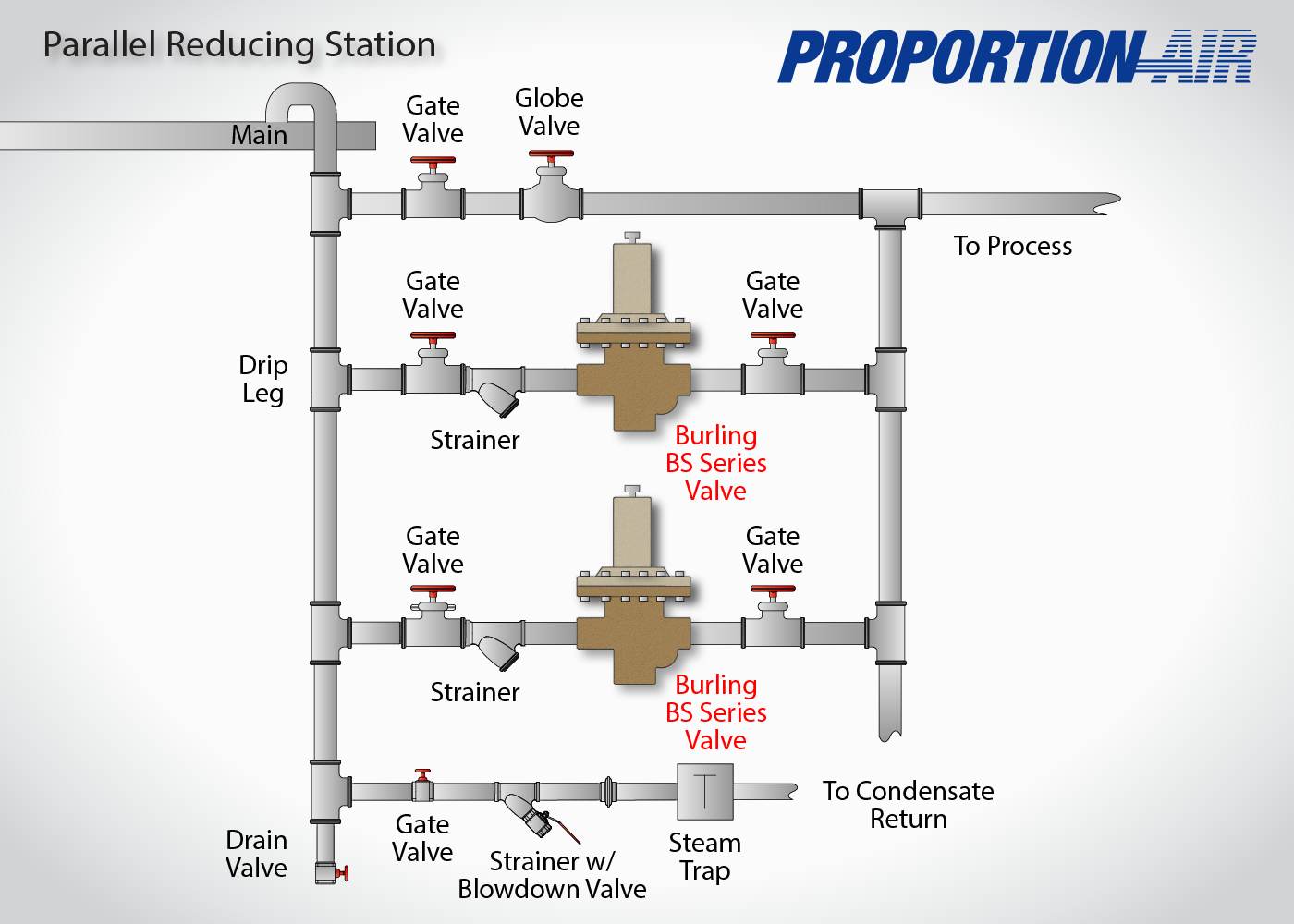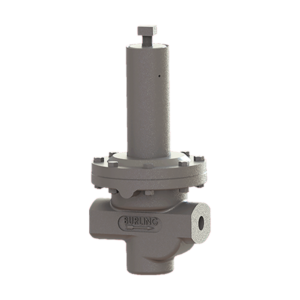
While similar to our simple pressure reducing valve station drawing, a parallel valve station has two regulators in parallel supply lines. The system is especially useful when an application minimum and maximum flow are outside the most effective operating capacity for a single unit.
In these situations, the larger unit should have a Cv size that is at 70 percent capacity at maximum flow, which is commonly recommended as a reasonable upper threshold for ideal operation. When the flow through the larger regulator drops to around 30 percent capacity (the lower threshold for Cv sizing), the second, smaller regulator in the system takes over. With proper selection, there will be a little overlap between the larger regulator’s lower capacity and the operating range of the smaller regulator. The smaller unit is sized for the minimum required flow of the application. It is also advantageous for the setpoint of the smaller regulator to have a setpoint slightly higher than larger regulator.
Another use of this installation is to have a built-in backup. If one unit fails, it’s easy to bypass, isolate and direct the supply through the other while repairs are made. With the BS1 units, the top-entry design means that repairs can be made in-line, without removing the unit from the pipe. Parallel schemes also save wear and tear on the units.
When you control the pressure of saturated steam, you control the temperature.
Regulated pressure is also a more stable solution than flow when the supply pressure or flow changes.
Learn more about controlling temperature in saturated steam applications.

